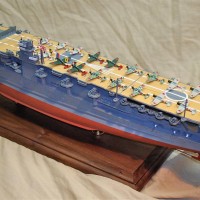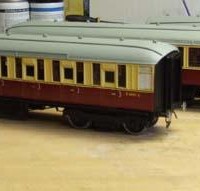2nd Lt Archie Maltby remembers D-Day
Today is the 73rd anniversary of the Invasion of Normandy. I remember Gladwyn Hill ("Gladhill") AP's "Man with the 8th" who made the first broadcast of the invasion from a bomber overhead telling me "they opened a hatch and I looked out at dawn and all you could see was ships."
From my book "Air Combat Annals" (which you can get as an e-book at Amazon):
21 year old 2nd Lt Archie Maltby flew his first mission that day with the 388th Fighter Squadron of the 365th "Hellhawks" Fighter Group of the 9th Air Force. He would survive the next 11 months as a Thunderbolt fighter bomber pilot, rising to Major a month after his 22nd birthday. On May 6, 1945, he was readying a new mission when the phone rang and the order was to stand down. "I looked at the pilot board, and there were only three names there I had flown with on D-Day. Ten had gone home when they finished their tours, the other 35 from that day were either dead or prisoners."
Here's Archie's memory of "The Longest Day" and the weeks that followed:
Dawn comes early in England during the summer. At 0200, June 6, 1944, the rumble of 48 Pratt and Whitney R-2800s reverberated over the quiet English countryside surrounding the former RAF base of Beaulieau Roads between Southampton and Bournemouth that was now home to the 9th Air Force's 365th Fighter Group. On the taxiway, the big P-47s - resplendent in the black and white identification stripes hurriedly applied with mops and brooms by the ground crews two nights before - S-turned heavily under their loads of two 500-lb bombs on the wing shackles and a 110-gallon drop tank on the centerline mount, as they took their turn to fly off into the rising sun.
At the runway, the flagman checked each pair as they moved into position; the engines roared as the pilots advanced their throttles to takeoff power, then began their roll as they were waved off. In the middle of the sixteen P-47s of the 388th Fighter Squadron, 2nd Lieutenant Archie Maltby ran his hands over his wool pants to dry his sweating palms, then pulled on his flying gloves. The next two airplanes moved into position and took off. The ground crew signalled Maltby and his wingman to move forward. He checked the engine instruments, worked the controls quickly in a last-minute check, and pushed the throttle forward. Halfway down the runway, the heavy Thunderbolt's tail came up, and then he was airborne with the main gear thumping into the wells. A right turn brought the two Thunderbolts over the Isle of Wight in a matter of moments; they joined the rest of the formation, heading east across the English Channel toward the coast of Normandy.
"I'll never forget what it was like that day. There were so many airplanes in the sky that there was a serious risk of collision, and there were so many ships in the Channel it seemed that you could have walked from ship to ship from England to France." The assignment for the 365th F.G. that day was to patrol the Cotentin Peninsula, to insure the Germans were unable to reinforce their units facing the invading Americans at Omaha and Utah Beaches.
After an hour, the Thunderbolts were free of their bombs and most of their ammunition. Returning to base, the pilots told the excited ground crews what they had seen. After a quick meal, they were back in their planes for a second sweep of the beachhead. "We thought that was it for the day when we got back from the second mission, but all of a sudden there was a call that radar had picked up the Luftwaffe heading toward the beaches, and all the airplanes that had been fueled were scrambled."
In fact, the only two members of the Luftwaffe to make an appearance over the Normandy beaches on D-Day were Oberst Josef "Pips" Priller, Geschwader Kommodore of JG26, and his wingman. "By the time we got there, Priller had already made his famous run over the beaches and gotten out of there." When they returned, night had fallen on England. "It really was the longest day I can ever remember," says Maltby.
In the following weeks, the men of the 365th would average a mission a day, regardless of the weather; this was far more than the 2-3 missions per week the unit had flown in the weeks leading up to the invasion since Maltby had arrived in England the preceding April. As busy as those weeks were, two missions still stand out in memory.
"The breakout from St. Lo was the greatest massing of airpower I ever saw. First, practically the entire Eighth Air Force struck the German lines, and it seemed like forever that we were orbiting off to the side waiting for all those bombers to fly over the target. They had divided the roads behind the front into grids, with a squadron of fighter-bombers assigned to each. As soon as the heavies turned away, we bombed and strafed every square inch. It was incredible to think that anyone could have survived under that."
Following the breakout from St. Lo, which effectively ended the Battle of Normandy, General George S. Patton's Third Army was sent east in an attempt to cut off the retreating German army by linking up with Montgomery's army, coming down from the northern sector of the invasion area. As they realized they were being cut off, the Germans fought harder to maintain an escape route, and managed to prevent the meeting of the American and Commonwealth armies, holding an area around the town of Falaise that would become known to history as "The Falaise Gap."
For ten days, Allied fighter bombers from the USAAF and the RAF struck the German forces relentlessly from dawn to dark. "After the third day, you could smell it in the cockpit, even at high altitude, before you got there," Maltby recalled. "All those men, and the horses and other animals they used to pull the carts, all the equipment that was burned up. It was a smell you could never forget." As British Typhoons rocketed the German panzers, American P-47s dive-bombed the convoys and strafed everywhere. "You almost felt sympathy for the Germans trapped down there."




Informative narrative, TC...thanks.
Air superiority. Festung Europa, without a roof.
I note the comment about the D-Day stripes, applied with mops and brooms. There may have been neatly applied stripes in some outfits, but I've got my doubts. Great to actually see that in print, though.
Over the days and weeks following, many of the stripes were "neatened" but most on D-Day weren't - they had a night to do the job.
Very interesting, Tom. Thanks for the interesting information.